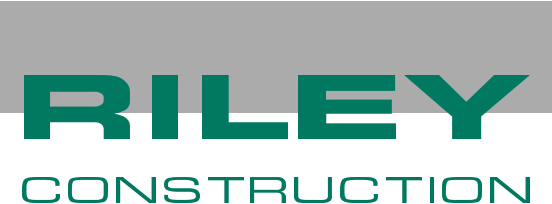Kathy Bowe, Riley Construction
You want your contractor to deliver your construction project on time and within budget. But did you know you have several options for exactly HOW you want that successful project delivered? The construction industry offers a variety of contract types to meet the needs of different customers, and for different types of projects. The right project delivery method depends on many project factors, including:
- Scope
- Budget
- Schedule
- Desired level of owner involvement
- Risk tolerance
Common Project Delivery Methods
The vast majority of construction contracts fall into one of four categories: Construction Manager at Risk (CM@R), Design-Bid-Build (also known as General Contractor), Design-Build, and Integrated Project Delivery (IPD). Each method presents its own benefits and challenges.
Construction Manager at Risk (CM@R)
This popular method involves separate contracts for the architect and the construction management firm (CM), who both report to the owner. The CM becomes involved in the project early in the design phase, enabling them to collaborate with the architect prior to construction. The CM is contracted to deliver the project at or below a Guaranteed Maximum Price (GMP), based on the proposed schedule and building plans. Any savings during construction are passed directly to the owner. Because the CM firm is brought into the process early, they are able to provide input that can greatly improve a project’s value.
From an owner’s standpoint, CM@R offers a high level of comfort and control without a great deal of direct involvement. An owner can become less “hands-on” as the project progresses, having selected a qualified CM to handle all aspects of the construction. The CM holds all contracts with subcontractors, so the owner carries no risk.
Design-Bid-Build (DBB), also called General Contractor (GC)
This is the best-known method of project delivery, perhaps because it is the standard method used in residential construction as well as common in commercial and industrial scenarios. Using this method, the owner chooses an architect and all design work is completed first. Contractors then bid on the construction work as one lump sum price, with the job awarded to the lowest bidder. The architect and GC operate separately, though both work for the owner. This structure gives the owner more control over the project than other methods, which can be beneficial to some owners but a headache for others!
While owners often choose DBB because of its perceived lower cost, that savings can also mean sacrificing quality and/or schedule — both of which should be factored into the delivery method decision. When dealing with a “low bid,” situation, you may have to deal with substandard work or multiple change orders. There is also inherent risk when the contractor has no input during the design phase.
Design-Build (DB)
An increasingly popular method, Design-Build offers owners a single contract, and a single point of contact for all construction activities. Fans of DB delivery appreciate the lack of owner risk and the fact that any conflicts are handled by the contractor – with DB, the owner can step back and let the contractor take care of everything! Because the design and construction teams work together, collaboration is encouraged. The method also allows for flexibility during different phases, which can reduce the schedule and be more cost-effective. DB works well for simpler construction projects that need to be done quickly.
Because you are giving up some control using this method, you also must give up some of the transparency that comes with GC or CM deliveries. Subcontractor bids and other costs are not as visible to the owner with this method, so when choosing a DB contractor, it’s imperative to clearly define the scope of work at the outset and factor in performance-based criteria through a competitive RFP.
Integrated Project Delivery (IPD)
Taking collaboration one step further, Integrated Project Delivery is structured to share the risk and rewards between all project stakeholders. With this method, the owner, architect, CM, and key trade partners work together to minimize waste, maintain schedule, and ensure quality. IPD is inherently the most collaborative of all delivery methods, as the three main parties (owner, architect, and constructor) are aligned by a single contract. However, many projects now use IPD methods under differently structured contracts.
The advantage of IPD comes from the shared fate and mutually agreed upon project goals, which lead to increased transparency and a commitment to reducing waste. However, the entire IPD concept is based on mutual trust, which unfortunately isn’t a sure thing among all parties. Whether used as a written contract or simply a philosophy, the IPD method is only as effective as the companies involved.
Confused about which method is best?
For over 55 years, Riley Construction has delivered successful projects using these and other, less common methods. Contact us to help you determine which delivery method is right for your specific needs!

